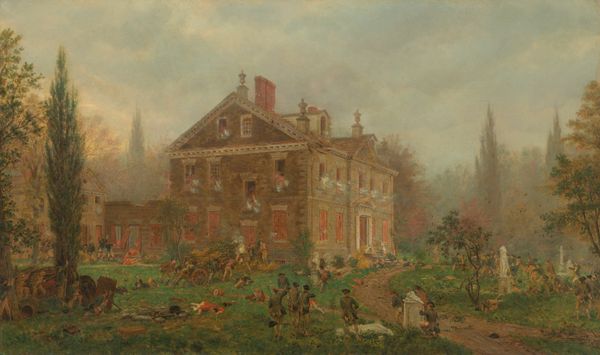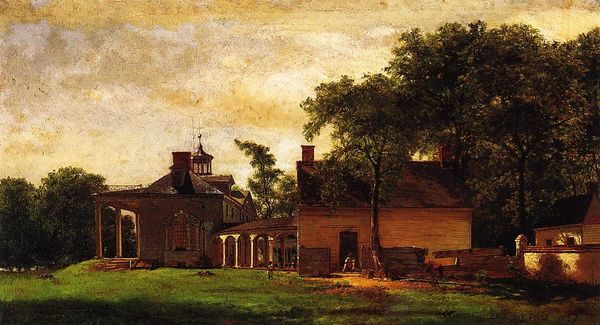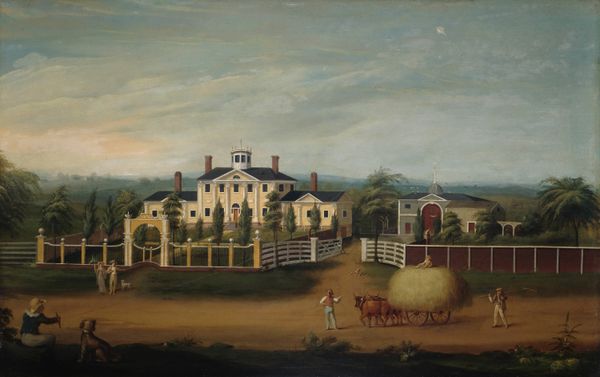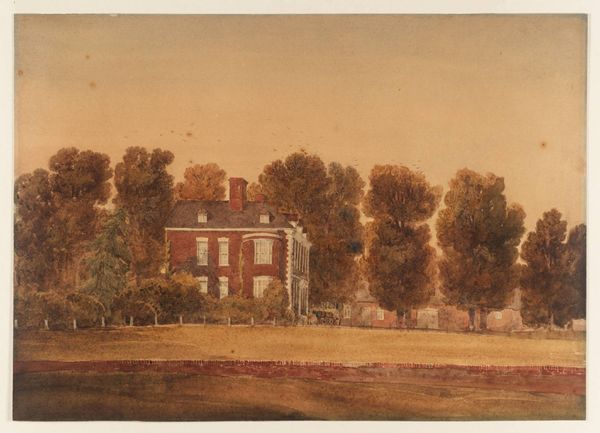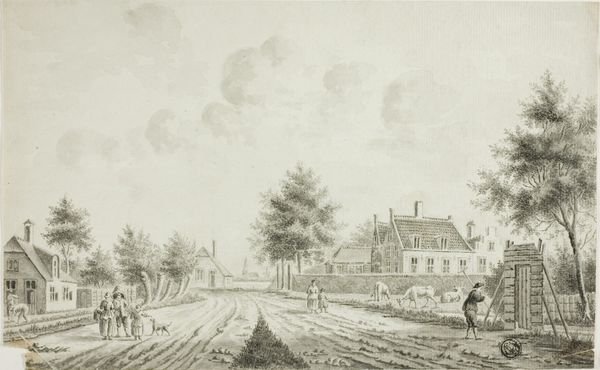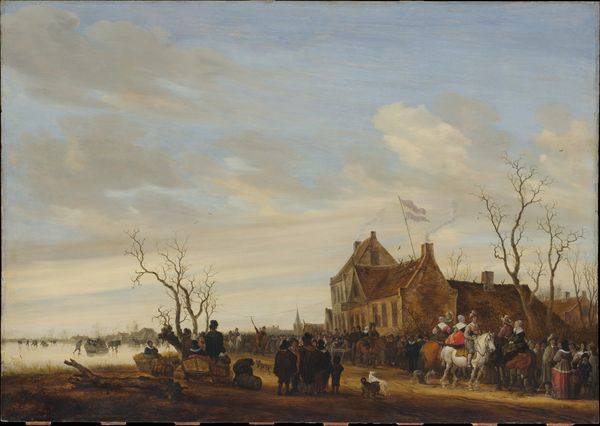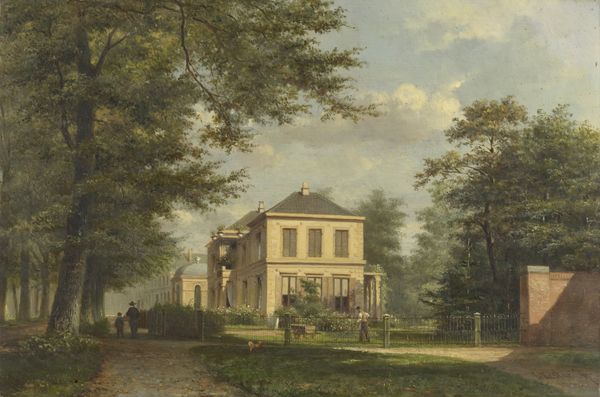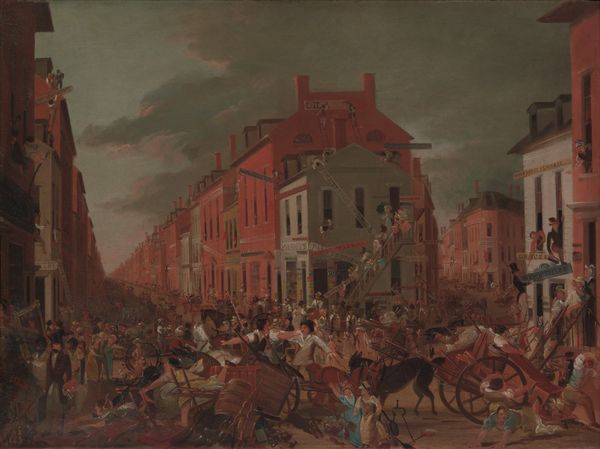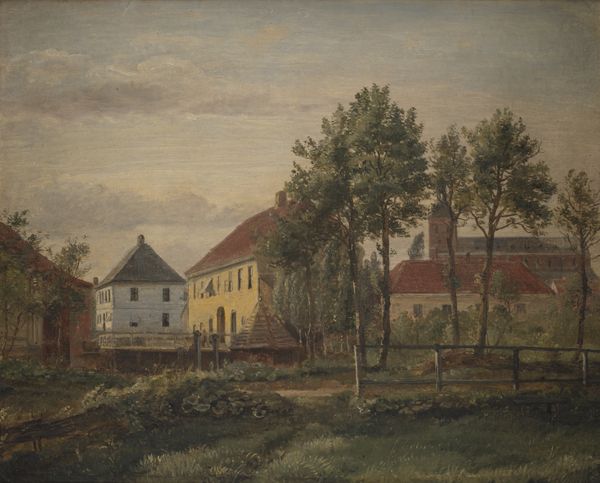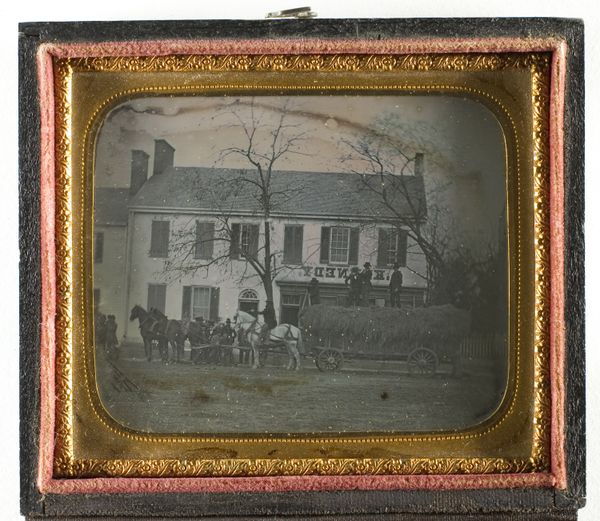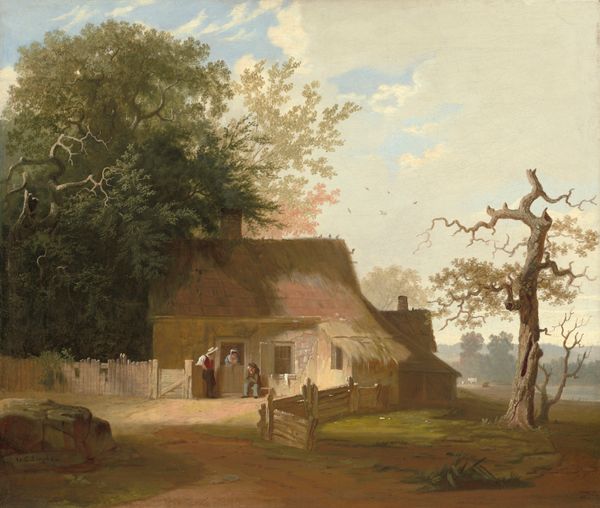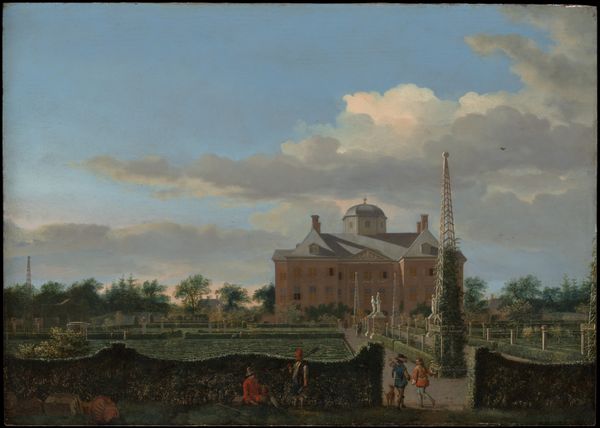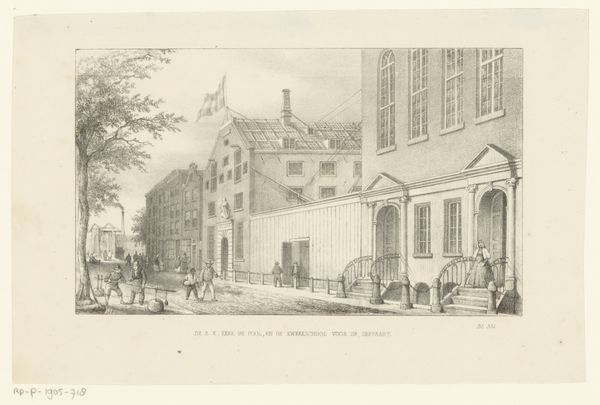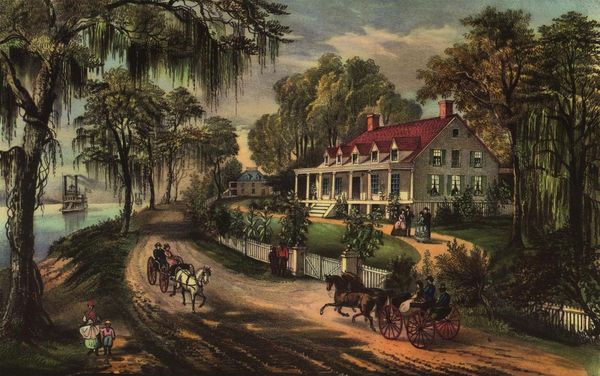
painting, oil-paint
#
painting
#
oil-paint
#
landscape
#
figuration
#
oil painting
#
hudson-river-school
#
cityscape
#
history-painting
#
realism
Dimensions: overall: 28.7 × 36.5 cm (11 5/16 × 14 3/8 in.) framed: 57.6 × 65.1 × 10.2 cm (22 11/16 × 25 5/8 × 4 in.)
Copyright: National Gallery of Art: CC0 1.0
Editor: This is Edward Lamson Henry's "The Old Westover House," painted in 1869 using oil paint. There's a palpable tension in the image, this grand house contrasted with the destruction and the military presence. What stands out to you formally? Curator: Indeed. Observe how Henry masterfully uses the color red, both for the main structure and the ruined building. It provides a visual echo, a mirrored distress. The strong horizontality of the house is disrupted by the vertical chimneys, which creates a compositional unease. Consider also the framing: the eye is drawn into the central plane, but note how the edges feel somewhat constricted by darker hues and detailed, low-lying elements like that decaying fence. Editor: The composition does feel deliberately unsettling. Is there any balance or harmony created in the piece? Curator: Balance is tentatively achieved, though not comfortably so. The cluster of figures on the left answers to the destroyed structure on the right, in that there is some visual weight at each side, but the tension never really lets up. A sort of mirroring as a narrative device. One might also think of the interplay of light and shadow, highlighting certain areas while obscuring others, thereby drawing the eye and suggesting depth. The use of texture also adds intrigue. Can you see how Henry used rough, impasto strokes on some surfaces, yet opted for smooth blending in others? Editor: Now that you mention it, there is variation, particularly in the foreground with the broken fence. The artist uses textural differences to draw attention. Are there other components? Curator: Precisely. Notice the rhythm of vertical lines – the chimneys, the standing figures, and even the broken fence – all contribute to a sense of structured instability. Also, consider the subtle shift in perspective. It doesn't follow conventional rules, creating a slightly distorted and ultimately uneasy sense of space. Editor: I never noticed how unsettling this painting was until you described the techniques so thoroughly. I'm drawn into that feeling, now! Thank you! Curator: Indeed, through careful examination of the artist's formal choices, one gains a deeper understanding of their expressive capacity. It becomes something visceral.
Comments
No comments
Be the first to comment and join the conversation on the ultimate creative platform.
